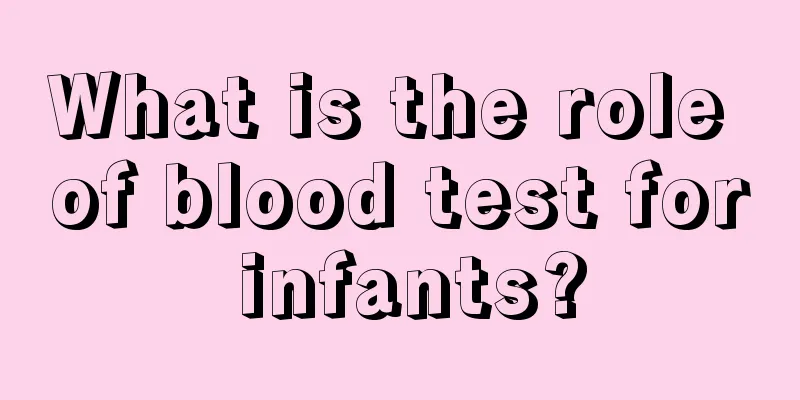How to treat ocular hypertension in children?

|
Nowadays, because there are so many electronic products, many children do nothing after returning home every day but play with these electronic products. It’s okay to play occasionally, but playing for a long time will be very bad for your eyes. It is not just as simple as myopia. If the eyes are tired for a long time, it is easy to cause some eye diseases. So the question is, how to treat ocular hypertension in children? For asymptomatic persistent increased intraocular pressure, with an intraocular pressure less than 24, regular check-ups are required. Patients who are not taking medications should have regular check-ups, and the intraocular pressure should be checked every 3-6 months. If the intraocular pressure is 24-30, you can use intraocular pressure-lowering drugs as prescribed by your doctor. Ocular hypertension is a special phenomenon that has been gradually recognized through decades of clinical practice experience in the diagnosis and treatment of primary open-angle glaucoma. In clinical work, people have also continuously confirmed that the vast majority of patients with a clear diagnosis of glaucoma have the common characteristic of increased intraocular pressure. Although ocular hypertension develops slowly and rarely causes damage to the optic disc and visual field, it does share an important pathological factor with open-angle glaucoma, namely, increased intraocular pressure. treat The most important thing in the treatment of ocular hypertension is close follow-up, mainly monitoring changes in intraocular pressure, fundus optic disc morphology and visual field. If intraocular pressure remains at a high level (such as ≥25 mmHg) or continues to rise, the optic disc morphology (preferably with quantitative analysis) and threshold visual field of the fundus should be tested once every 6 months. If there are high-risk factors or obvious adverse factors appear during follow-up, drug treatment may be given as appropriate. However, laser or surgical treatment is generally not recommended because the eye damage caused by the latter two will be irreversible. If drug treatment is given, the pros and cons should be weighed to select appropriate intraocular pressure-lowering drugs, and the intraocular pressure should be lowered to within the normal statistical range as much as possible, or ideally reducing the baseline intraocular pressure by 30%. prevention 1. Psychological adjustment When the patient is emotionally unstable, tired, or works in a dark environment for a long time, the sympathetic nerves become excited, causing the dilator pupillae muscles to contract, resulting in pupil dilation and the accumulation of the sclera to the periphery, which closes the chamber angle, obstructs the outflow of aqueous humor, increases intraocular pressure, and triggers an attack of glaucoma. Let patients understand that acute attacks of glaucoma are related to the above factors, and let them stay in a good mood, lead a regular life, and avoid emotional fluctuations. 2. Eat a healthy diet Do not smoke, drink alcohol, drink strong tea, coffee, or eat spicy and other irritating foods. At the same time, control the amount of water you drink, and it should not exceed 300 ml at a time, so as to avoid a large amount of water being absorbed into the blood in a short period of time, which will increase the aqueous humor and cause increased intraocular pressure. Eat more vegetables and honey, which can not only lower intraocular pressure, but also have a laxative effect, thereby avoiding the increased secretion of aqueous humor in the eye and causing increased intraocular pressure. 3. Lifestyle Arrange your daily life reasonably, relax yourself, and keep a happy spirit; do not stay in a dark room or dark environment for too long, because in darkness, the pupil dilates, the iris surrounds the narrow chamber angle, the drainage of aqueous humor is obstructed, and the intraocular pressure increases; there should be indoor lighting when watching TV to avoid pupil dilation; do not lower your head or bend over to read or write for a long time; belts, underwear, necklines and bras should not be too tight to prevent increased internal carotid artery pressure, which in turn increases intraocular pressure; raise the pillow appropriately when sleeping. 4. Review on time Clinically, many patients often mistakenly believe that glaucoma can be cured after surgery and no longer return for follow-up visits. Therefore, it is important to explain to patients that although the intraocular pressure of glaucoma is controlled, it does not mean that the disease is cured, and they should still pay attention to changes in intraocular pressure, optic disc and visual field. Follow-up examination should be conducted 1 week after discharge; monthly thereafter; after 3 months, follow-up examination should be conducted every 6 months. If you notice rainbows when you see lights, eye pain, blurred vision, or decreased vision, you should get checked out immediately. |
<<: One-year-old baby has a lot of phlegm and a hoarse throat
>>: Can babies eat durian when they have a fever?
Recommend
How to identify ADHD in children
Children have relatively weak physical fitness. O...
What foods can cause precocious puberty?
With the continuous improvement of economic condi...
How to clean your baby's ears
The ear is a relatively fragile part of the human...
Why do babies get paronychia?
Paronychia is a disease caused by bacterial infec...
Causes of joint cracking in children
If we observe the physical development of childre...
What is the cause of convulsions caused by fever in children?
Parents are extremely concerned about their child...
What to do if your baby has high trace element lead
Lead is also a common trace element in the human ...
Three-month-old baby's urine output decreases
Three-month-old babies usually cannot speak yet, ...
What to do if children have supernumerary teeth?
Children's dental health is a very important ...
The child has secretions from the lower body
Because modern people's living material stand...
15-year-old girl suffers from dizziness, chest tightness and foaming at the mouth
When girls are in adolescence, it is a particular...
Newborn baby's feet turned inward
Clubfoot is generally a disease of newborns. In f...
Reasons for spitting up milk in a two-month-old baby
It is very normal for a baby of half a month to s...
How can children correct their hunchbacks through self-exercise?
Many parents will find that their children have p...
What is the normal body temperature for a one month old baby?
The temperature regulation function of a one-mont...









